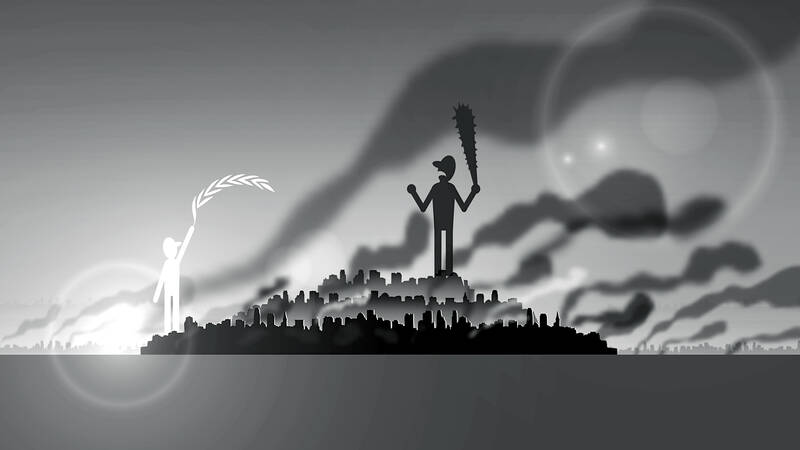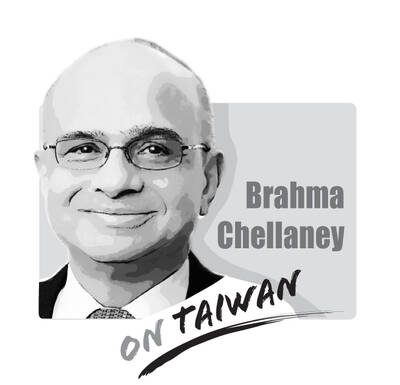At a time of rising geopolitical tensions and deepening global fragmentation, the Ukraine war has proved particularly divisive. From the start, the battle lines were clearly drawn: Russia on one side, Ukraine and the West on the other, and much of the Global South hoping only for the conflict to end. However, alignments are shifting. Whether that would advance efforts to resolve the conflict and strengthen global stability remains to be seen.
After more than three years, Europe — including the EU, the UK and Norway — remains largely steadfast in its support of Ukraine. The largest armed conflict in its neighborhood since World War II has deeply affected the European psyche, as it has challenged basic assumptions about continental security and revived the specter of nuclear annihilation that loomed over Europe throughout the Cold War. The prevailing view has always been that a Russian “victory” — including a peace deal that ceded some Ukrainian territory to Russia — would amount to an “existential threat.”
However, the US has decided that it no longer wants to “pour billions of dollars” into what US Secretary of State Marco Rubio called a “bloody stalemate, a meat-grinder-type war.” So, US President Donald Trump is seeking to negotiate a peace deal with Russian President Vladimir Putin. To press Ukraine to accept the concessions such an agreement would undoubtedly entail, the Trump administration suspended and later resumed military aid and intelligence support.

Illustration: Yusha
That is not about ending a “savage conflict” for “the good of the world,” as Trump claimed. While years of sanctions were supposed to drain Russia, economically and militarily, to the US’ benefit, they bolstered an unholy Sino-Russian alliance against the West, while sustaining a conflict that kept US attention and resources in Europe. With his push for a peace deal in Ukraine, Trump is seeking to cut the Washington’s losses and shift its strategic focus and military resources toward the Indo-Pacific — the home of the US’ real enemy: China.
As Trump’s predecessor former US president Joe Biden recognized, only China has the resolve and capability to surpass the US as the foremost world power. Yet the US still has more than 100,000 troops stationed in Europe. That is why US Secretary of Defense Pete Hegseth recently warned that the US can “no longer tolerate” an “imbalanced” transatlantic relationship that “encourages dependency.”
Europe must take “responsibility for its own security,” Hegseth said, so the US can focus on “deterring war with China.”
The question is whether Europe is capable of managing its own security. The answer probably should be yes.
As Polish Prime Minister Donald Tusk recently said, Europe does not lack economic strength. Nor does it lack people: There are “500 million Europeans begging 300 million Americans to defend them against 140 million Russians.” What is missing is the EU’s belief that it is a “global power.” The result is a rudderless Europe.
When it comes to supporting Ukraine, Europe has another critical shortcoming.
As NATO Secretary-General Mark Rutte has said, Europe lacks the necessary military-industrial base to provide sufficient arms support to Ukraine. That is why some, including Rutte, want to make a deal with the US: You keep supplying Ukraine with weapons and we will foot the bill. Unless the Trump administration accepts such an arrangement, the British-French plan to build a “coalition of the willing” to do the “heavy lifting” on Ukrainian security would face powerful headwinds.
Meanwhile, the Global South is still struggling to cope with the Ukraine war’s economic fallout, especially sharply higher food and energy prices, which have had particularly devastating consequences for small and vulnerable developing countries with limited foreign reserves. Sri Lanka is a case in point. In the months that followed Russia’s full-scale invasion of Ukraine, skyrocketing global prices drained its reserves, leading to fuel, food, medicine and electricity shortages. The resulting economic meltdown pushed a frustrated population over the edge, triggering widespread protests that toppled a political dynasty.
That explains why developing countries remain largely unified in advocating an early negotiated end to the war, even if that means leaving a sizeable chunk of Ukrainian territory under Russian occupation. If anything, calls for a peace agreement have grown since 2023, with even NATO member Turkey and close US ally Israel charting more independent stances on the conflict. It does not help that, for many countries in the Global South, the West’s contrasting responses to the wars in Ukraine and Gaza reek of hypocrisy.
For now, Ukraine and Europe remain committed to seeking peace through strength. However, as admirable as Ukraine’s resistance has been, and as important as it is to defend the international legal principles of sovereignty and territorial integrity that Russia has flagrantly contravened, the fact is that the conflict has reached a stalemate, while the international fallout continues to grow. Rather than repeat the mistakes of the 1950 to 1953 Korean War — in which an armistice agreement was reached only after two years of military deadlock — all parties should adopt a realistic approach to ending the war and negotiate accordingly.
Brahma Chellaney, professor emeritus of strategic studies at the New Delhi-based Center for Policy Research and fellow at the Robert Bosch Academy in Berlin, is the author of Water, Peace, and War: Confronting the Global Water Crisis.
Copyright: Project Syndicate
A response to my article (“Invite ‘will-bes,’ not has-beens,” Aug. 12, page 8) mischaracterizes my arguments, as well as a speech by former British prime minister Boris Johnson at the Ketagalan Forum in Taipei early last month. Tseng Yueh-ying (曾月英) in the response (“A misreading of Johnson’s speech,” Aug. 24, page 8) does not dispute that Johnson referred repeatedly to Taiwan as “a segment of the Chinese population,” but asserts that the phrase challenged Beijing by questioning whether parts of “the Chinese population” could be “differently Chinese.” This is essentially a confirmation of Beijing’s “one country, two systems” formulation, which says that
Media said that several pan-blue figures — among them former Chinese Nationalist Party (KMT) chairwoman Hung Hsiu-chu (洪秀柱), former KMT legislator Lee De-wei (李德維), former KMT Central Committee member Vincent Hsu (徐正文), New Party Chairman Wu Cheng-tien (吳成典), former New Party legislator Chou chuan (周荃) and New Party Deputy Secretary-General You Chih-pin (游智彬) — yesterday attended the Chinese Communist Party’s (CCP) military parade commemorating the 80th anniversary of the end of World War II. China’s Xinhua news agency reported that foreign leaders were present alongside Chinese President Xi Jinping (習近平), such as Russian President Vladimir Putin, North Korean leader Kim

Taiwan stands at the epicenter of a seismic shift that will determine the Indo-Pacific’s future security architecture. Whether deterrence prevails or collapses will reverberate far beyond the Taiwan Strait, fundamentally reshaping global power dynamics. The stakes could not be higher. Today, Taipei confronts an unprecedented convergence of threats from an increasingly muscular China that has intensified its multidimensional pressure campaign. Beijing’s strategy is comprehensive: military intimidation, diplomatic isolation, economic coercion, and sophisticated influence operations designed to fracture Taiwan’s democratic society from within. This challenge is magnified by Taiwan’s internal political divisions, which extend to fundamental questions about the island’s identity and future
Taiwan People’s Party (TPP) Chairman Huang Kuo-chang (黃國昌) is expected to be summoned by the Taipei City Police Department after a rally in Taipei on Saturday last week resulted in injuries to eight police officers. The Ministry of the Interior on Sunday said that police had collected evidence of obstruction of public officials and coercion by an estimated 1,000 “disorderly” demonstrators. The rally — led by Huang to mark one year since a raid by Taipei prosecutors on then-TPP chairman and former Taipei mayor Ko Wen-je (柯文哲) — might have contravened the Assembly and Parade Act (集會遊行法), as the organizers had